Titus Oates, the Perjuring Priest
Titus Oates was a liar. But he was a special type of liar, the kind who told a lie that people desperately wanted to believe. If his lie was a spark, then it started an inferno – and that inferno would consume dozens of lives before it ran its course.

Titus was born on the 16th September 1649 at Oakham in Rutland. His father Samuel was originally an Anglican priest, though hardly a devout one. When the English Civil War permitted greater religious freedom, he converted to Baptism and became well known for travelling the country preaching their doctrine. At the time of Titus’ birth he was a chaplain in Cromwell’s New Model Army. With the Restoration of the Monarchy in 1660 Samuel converted back to Anglicanism, as the country became less tolerant of atypical religious views. In 1665 he was able to get Titus admitted to the prestigious Merchant Taylor’s School in London. One of his teachers later recalled that Titus had been admitted as a “free scholar”, but had conspired to have his father send down an entrance fee which he pocketed himself. He was only there a few months before he was expelled by the headmaster, John Goad, allegedly for falling far below the standards of study and intellect the school required. It was a slight that Titus would not forget.
Despite his academic failings Titus managed to gain entrance to Cambridge University. At first he was a student at Gonville and Caius College, but he was expelled. He then moved to St Johns College, but was also expelled from it. His tutor, a Doctor Watson, wrote:
He was a great dunce, ran into debt, and being sent away for want of money, never took a degree.
With academia proving unfruitful, he followed his father into the priesthood in 1670. In 1673 Samuel found his son a parish in Kent, where he gained a reputation as a troublemaker and a drunkard. The following year he moved to Hastings and became his father’s curate. The pair concocted a plot to get Titus the local schoolmaster’s position by accusing the incumbent, William Parker, of homosexuality. The plan failed, possibly due to Titus drunkenly accusing Parker’s father of treason and so causing a higher level of investigation. Samuel lost his parish while Titus was charged with perjury. He managed to flee the charges and became a chaplain on a Navy vessel.
Titus’ stint in the Navy was short-lived, however. On his first voyage (to Tangiers) he was accused of sodomy. Whether Titus was actually guilty of this is unknown, but the accusation resulted in him being returned to England and expelled from the Navy. Oates would later claim that this was his first encounter with Catholic plotters, and the accusation was a means to discredit him. It was definitely around this time that his association with the barely-tolerated Catholic minority in England began. In 1677 he joined the household of the Duke of Norfolk, one of the few openly Catholic aristocrats. On Ash Wednesday of that year he converted to Catholicism, though he seems to have lost his post with the Duke around the same time. With his new faith he joined the Jesuits, though oddly it was also at around this time that he became friends with a notorious preacher against the Jesuits named Israel Tonge. Tonge shared a patron with Titus’ father Samuel, who had converted back to Baptism. He persuaded Titus to help him write some anti-Catholic pamphlets – somewhat odd given Titus’ recent conversion – but Titus never actually followed through. In April 1677 he managed to gain a letter of introduction from Doctor Richard Strange, the head of the Jesuit order in England, and used it to head off to study on the Continent.
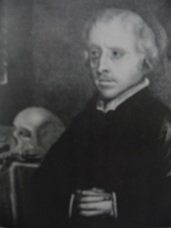
With Strange’s letter he gained entrance to the Royal English College in Valladolid, Spain. It had been founded in the aftermath of the failed Spanish invasion of England to train priests for the “English and Welsh Mission”. The centrepiece of the College was (and still is) a statue of the Virgin Mary that had been desecrated by English soldiers under Walter Raleigh’s command when he occupied Cadiz. As with its sister colleges in Douai and Rome it had certainly been a centre for those plotting against Protestant rule in England, and echoes of such talk doubtless still lingered. Though Titus proved no better a student here than he had elsewhere, he certainly remembered that. The head of the college, Father Manuel de Calatayud, did not trust him and made him remain in lay dress, eventually expelling him. Undeterred Titus travelled to the Jesuit college at St Omer, where he tried to gain entry (allegedly under the alias of “Stampson Lucy”). When word came from England that Strange’s successor, Thomas Whitbread, had revoked Titus’ position with the Jesuits he was expelled and forced to return to London.
How sincere the attempt Titus made to join the Jesuits is a mystery. He would later claim it was a ruse, but there is no reason to believe him and several good reasons not to. [1] It’s possible that he did it simply to lend credence to his later actions, but it’s also possible that his later actions were a form of revenge against a group that spurned him. What’s not in doubt is what he did when he returned to London. He renewed his friendship with Israel Tonge, and told him that he had learned of many Jesuit plots on the continent, including one aimed at Tonge himself. Tonge was convinced that extreme action was needed, and the two decided to take the most infamous plot they could think of and frame the Catholics of England for it. They decided to create a plot to kill the King.

This was not quite as far-fetched as it might have been. The plot of Guy Fawkes to blow up Parliament seventy years earlier certainly gave it precedent. Moreover, since King Charles II was childless [2] his heir was his Catholic brother James, the Duke of York. Still, there’s never been any evidence that the plot Israel and Titus created was anything other than pure fiction. Titus wrote a manuscript detailing the plot, and then hid it behind a wood panel in the house of the physician Sir Richard Barker. Israel then “discovered” it with a friend, Christopher Kirkby. Kirkby was shocked by the manuscript (which outlined a plan to shoot the King, and to have his physician poison him while treating him if he survived the bullet). The King was well known to take walks in a certain park, and to allow members of the public to approach him during these walks. Kirkby went to see him and persuaded the King to grant an audience to him and Tonge.
Charles never seems to have actually believed in the plot, but he was well aware of the instability of his throne. His own father had been beheaded and he knew that his rule was far from certain. Thus as the rumours increased he was forced to order an investigation. Titus Oates soon became a central figure in the investigation, as he claimed to be able to corroborate the manuscript. Oates declared in his deposition:
The General Design of the Pope, Society of Jesus, and their Confederates in this Plot, is, the Reformation, that is (in their sense) the Reduction of Great Britain and Ireland, and all His Majesties Dominions by the Sword (all other wayes and means being judged by them ineffectual) to the Romish Religion and Obedience.
More, he claimed to have been present at a Jesuit meeting in London where the means to kill the King were discussed. The judges were impressed by how closely his account tied to that of the manuscript (not realising he had written it). Titus began naming names, and people began to be arrested. Some of the most notable included the secretary of the Duke of York’s wife, the Catholic Archbishop of Dublin, and the respected MP (and famous diarist) Samuel Pepys. Titus also took the opportunity to settle old scores, and as well as having Thomas Whitbread and the other Jesuits arrested also accused the headmaster who had expelled him from the Merchant Taylor’s School.
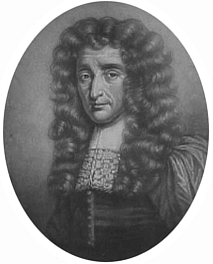
Though Titus made a good showing in court (and seems to have missed his true vocation for the stage), his inability to recognise some of those he accused and the lack of widespread evidence meant the whole thing could easily have blown over. Then disaster struck. The judge Sir Edmund Berry Godfrey, who was involved with the investigation, was murdered. He was found face-down in a ditch impaled with his own sword – though he had actually died of a broken neck while being strangled. His murder was never solved, though some speculate it may have been related to his involvement (along with some of those Titus had accused) in the “Green Ribbon Club”, a radical (and influential) association that had ties to the old Commonwealth of Cromwell. Of course, the Green Ribbon Club was also very anti-Catholic so it was easy to point the finger at the shadowy figures behind Titus’ plot as his killers. Who truly killed him is unknown to this day. [3]
It didn’t really matter who had killed Godfrey. What mattered was that the public were convinced that Catholics had done it in order to steal evidence about the plot. [4] Around the same time, in the letters of Edward Colman (the aforementioned secretary to the Duke of York’s wife) investigators found some old correspondence where he had discussed with a French Jesuit a plan to force the dissolution of Parliament. This was hardly proof of his complicity in a plan to kill the King, but it was enough for them. Furthermore, the growing public outcry meant that some progress had to be shown. In November 1678 Colman went on trial. Titus Oates gave evidence against him, claiming he had carried letters from him to English Jesuits and that he had seen him at a meeting to discuss the regicide. Under cross examination it came out that Titus had failed to recognise Colman the first time he had been shown him, but despite that (and the obvious contradictions in other testimony) Colman was found guilty. On the 3rd December 1678 he was executed, still swearing his innocence to the last. The false plot had claimed its first victim – it would not be the last.
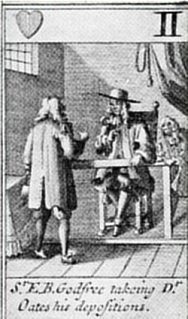
The Plot soon began to grow, like a living thing. A con man named William Bedloe was paid £500 for his “underground information” on Godfrey’s murder. He denounced a Catholic silversmith named Miles Prance, who was tortured until he gave up names. Three of the men he named (Henry Berry, Robert Green and Lawrence Hill) were arrested, tried and (despite the lack of any evidence beyond Prance’s testimony) executed. A lot of the blame for this can be placed on the Lord Chief Justice, Sir William Scroggs. He had also been the judge at the Colman trial, and his summing up in both cases had sealed all four men’s fate. The public opinion was also heavily in favour of the plot however, and even Scroggs began to feel their wrath when his conviction began to flag. The mob wanted blood.

Nine Jesuit priests were executed, including Thomas Whitbread. Twelve more died in prison. Five Catholic Lords were put on trial when Oates accused them, despite the King pointing out that one was barely able to stand from gout and two were well known to despise each other. The Earl of Shaftesbury, former Lord Chancellor and leader of the opposition, was using the Plot as a means to regain his position. He ordered the five Lords arrested before publicly demanding that James be excluded from the succession. [5] One of the lords, Viscount Stafford, was put on trial for treason on the testimony of Oates and several other corrupt witnesses. Those charged with treason were refused the right to defence counsel under English law at the time, which meant that regardless of evidence such proceedings were all but a sham. Stafford was found guilty and executed.
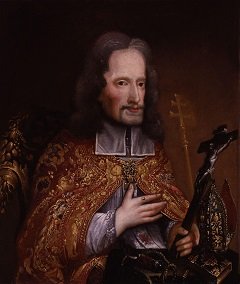
Stafford’s death appalled Charles, but he was incapable of turning the tide of the Plot. Oates however finally went too far when he accused the Queen of trying to poison the King. Charles had him arrested, but Parliament (now in Shaftesbury’s pocket) ordered his release. He received an allowance of twelve hundred pounds a year, and a state apartment in Whitehall. But gradually the fire began to burn itself out. The trial and execution of Oliver Plunkett, the Catholic Primate of Ireland, finally proved too much. Even Shaftesbury and Scroggs knew that Plunkett had no role in any plot. Plunkett was the twenty-second person killed by Oates’ great lie, and the last. On the 31st August 1681 Oates was ordered to leave his apartment in Whitehall. In 1684 he was arrested in a coffee house for referring to the Duke of York as a traitor. He was fined £100,000 (an incredible sum for the time) and naturally wound up imprisoned for debt.
On the second of February King Charles the second suffered a sudden fit, probably due to kidney failure. Four days later he died, and the Catholic James II ascended to the throne. By this time all those imprisoned during the paranoia over the Plot had been released (those who had not died in prison, at least). Oates was still in prison or sedition, and in May he was tried for and convicted of perjury. His judges included the infamous “hanging judge” George Jeffreys. One other judge, George Wythens, said:
I do not know how I can say but that the law is defective that such a one is not to be hanged.
Hanging was not an option in this case because perjury did not carry the death sentence, but Jeffreys did his best. He had Oates placed in the pillory for two days, and then whipped through the streets for two days. Men had died in the pillories from the crowd throwing rocks, though Oates was not stoned. Similarly, two days of whipping was enough to kill a man, but Oates survived. He was returned to prison. Jeffreys ordered the whipping to be done annually, though it’s unclear if it was actually repeated.
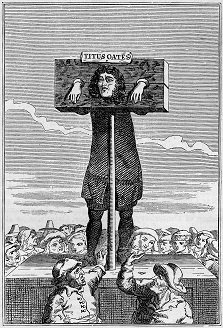
Of course, the wheel turned again soon after. In 1688 William of Orange, James’ Protestant son in law, invaded England under invitation from English Protestant nobles. By 1689 he controlled London, and Titus Oates was released from prison. He was pardoned, official endorsement of his actions if not support for his claims, and given a state pension. He lived a relatively obscure life thereafter, converting (like his father) to Baptism in 1693 when he married a Baptist woman. He may possibly have been expelled from the Baptist congregation in 1698 before finally dying in 1705. Public opinion, even in those times when Catholicism was persecuted, still regarded Titus as a liar and a perjurer. Though some (even as recently as the 19th century) sought to portray him as a patriot and the Plot as reality, by and large history has agreed. He was a liar who told the lie that people wanted to hear, and he was willing to see people die on the basis of his lies, a murderer in all but deed. His hands were not the only ones red with innocent blood, but he set the fire, and never cared who died in the flames.
Images via wikimedia.
[1] The fact that history remembers him as “Titus the Liar” would be among them.
[2] Actually he had about a dozen children. Just none with his wife.
[3] The mystery writer John Dickson Carr and the American historian John Philipps Kenyon both point the finger at the Earl of Pembroke, who Godfrey had prosecuted for murder after he killed a man in a tavern brawl. The Earl had a notorious temper (he would go on to kill another man in a fight) and had sworn revenge on Godfrey.
[4] This makes no sense, since the evidence in question would have been depositions from people who were still alive and capable of giving their depositions again. This is about the point logic goes out the window.
[5] This demand led indirectly to the foundation of the Whig party, ancestor of the modern Liberal Democrats.
